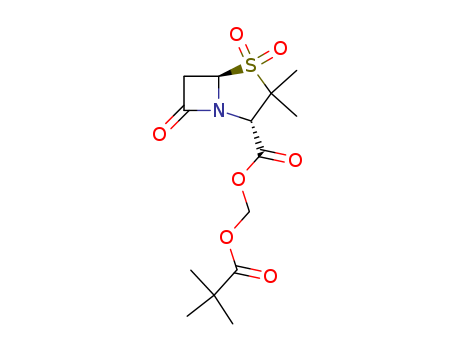- Product Details
Keywords
- 1-Ethyl-1,4-dihydro-6,7-methylenedioxy-4-oxo-3-quinolinecarboxylicacid
- 14698-29-4
- Oxolinic acid
Quick Details
- ProName: Oxolinic
- CasNo: 14698-29-4
- Molecular Formula: C13H11NO5
- Appearance: White crystallization
- Application: Stimulating gastro-intestinal function...
- DeliveryTime: in two weeks
- PackAge: 25kg/drum
- Port: SHANGHAI BEIJING
- ProductionCapacity: 10 Metric Ton/Day
- Purity: USP/EP/BP
- Storage: room temperature
- Transportation: AIR SEA TRAIN
- LimitNum: 1 Kilogram
Superiority
We are very compeitive on Oxolinic acid.Our mfr is GMP certified for this item with DMF document.
| Product Name: | Oxolinic acid |
| Synonyms: | 1-ethyl-1,4-dihydro-6,7-methylenedioxy-4-oxo-3-quinolinecarboxylicacid;1-ethyl-6,7-methylenedioxo-4-quinoline-3-carboxlicacid;utibid;w4565;OXOLINIC ACID;5,8-DIHYDRO-5-ETHYL-8-OXO-1,3-DIOXOLO[4,5-G]QUINOLINE-7-CARBOXYLIC ACID;5-ethyl-5,8-dihydro-8-oxo-1,3-dioxolo[4,5-g]quinoline-7-carboxylic acid;5-ETHYL-8-OXO-5,8-DIHYDRO-[1,3]DIOXOLO[4,5-G]QUINOLINE-7-CARBOXYLIC ACID |
| CAS: | 14698-29-4 |
| MF: | C13H11NO5 |
| MW: | 261.23 |
| EINECS: | 238-750-8 |
| Product Categories: | API;UTIBID;veterinary medicine,APIs,pharmaceutical raw material;Heterocyclic Compounds;Heterocycles;Intermediates & Fine Chemicals;Pharmaceuticals |
| Mol File: | 14698-29-4.mol |
| Oxolinic acid Chemical Properties |
| Melting point | 314-316°C (dec.) |
| Boiling point | 473℃ |
| density | 1.3038 (rough estimate) |
| refractive index | 1.5500 (estimate) |
| Fp | >110°(230°F) |
| storage temp. | 2-8°C |
| solubility | Soluble in 0.5N NaOH with warming |
| form | Crystalline Powder |
| pka | 5.94±0.20(Predicted) |
| color | White |
| Water Solubility | 3.214mg/L(temperature not stated) |
| Sensitive | Light Sensitive |
| Merck | 13,7014 |
| BRN | 620635 |
| Stability: | Stable. Combustible. |
| InChIKey | KYGZCKSPAKDVKC-UHFFFAOYSA-N |
| CAS DataBase Reference | 14698-29-4(CAS DataBase Reference) |
| EPA Substance Registry System | Oxolinic acid (14698-29-4) |
| Safety Information |
| Hazard Codes | Xn |
| Risk Statements | 22 |
| Safety Statements | 22-24/25-60-36 |
| WGK Germany | 3 |
| RTECS | JI5075000 |
| F | 10 |
| HS Code | 29349990 |
| Hazardous Substances Data | 14698-29-4(Hazardous Substances Data) |
| Toxicity | LD50 in mice, rats (mg/kg): >6000, >2000 orally (Turner) |
Details
| Oxolinic acid Usage And Synthesis |
| Description | Developed in Japan in the 1970s, oxolinic acid belongs to the family of quinolone antibiotic, which is a synthetic antimicrobial agent aiming at gram-negative bacteria, especially those responsible for urinary tract infections. It is also commonly used in clinical for microbiological antimicrobial susceptibility tests against gram negative microbial isolates, providing antibiotic treatment options for infected patients. It can serve as a selective agent in several types of isolation media, for example, to isolate Gardnerella vaginalis. Besides, oxolinic acid can be applied in agriculture, which has proved to be effective against the seed-borne pathogen, such as Burkholderia glumae, a bacteria inducing grain rot, sheath rot, seedling rot, and bacterial panicle blight. Oxolinic acid works by targeting DNA gyrase or topoisomerase II, enzymes vital for DNA synthesis, which ultimately inhibits DNA synthesis and cell division. |
| References | # # # |
| Description | Bacterial DNA gyrase is a heterodimeric type II topoisomerase that negatively supercoils circular double-stranded DNA. Oxolinic acid is a quinolone antibiotic that inhibits bacterial DNA gyrase, but not eukaryotic topoisomerases, reversibly binding gyrase subunit A in gyrase-DNA complexes, blocking supercoiling activity and inhibiting DNA synthesis at 0.5-5 μg/ml. Oxolinic acid also blocks neuronal uptake of dopamine in mammals (IC50 = 4.3 μM), leading to an increase in locomotor activity. |
| Chemical Properties | Crystalline Solid |
| Originator | Prodoxol,Warner,UK,1974 |
| Uses | Oxolinic acid is used to study new transmissible resistance mechanisms qnrA, qnrB, qnrS, and aac(6′)Ib-cr, in Escherichia coli and Salmonella enterica. Oxolinic acid is added to culture medium for the isolation of Gardnerella vaginalis. |
| Uses | Oxolinic acid is a quinolone antibiotic used for studies on DNA winding and coiling and for studies on dopaminergic neurotransmission processes. It is used to study new transmissible resistance mechanisms qnrA, qnrB, qnrS, and aac(6′)Ib-cr, in Escherichia |
| Uses | Quinolone antibacterial. |


 Diamondsupplier
Diamondsupplier 




